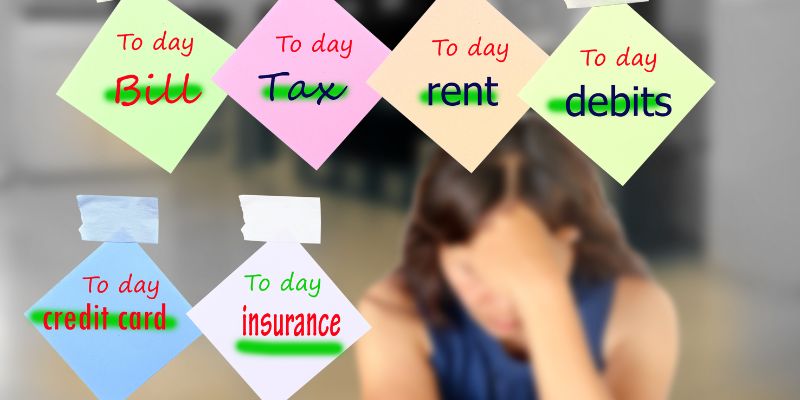A ventral hernia is a medical term for the stomach sticking out through a hole in the abdominal wall (the umbilicus). Because of the risk of death if it isn't treated, this is an urgent situation that must be dealt with immediately. If you don't care for a ventral hernia, it could cause severe pain, nausea, vomiting, and even death. This article will talk about the signs and symptoms of a ventral hernia, as well as the different causes of a ventral hernia and treatments that work. You will also get a booklet from us with information on self-diagnosing this illness. In the last part of this tutorial, we'll review some of the best websites that may answer any questions about ventral hernia.

What is a ventral hernia?A ventral hernia is a condition that happens when intestine pushes through an opening in the abdominal wall and into the abdominal cavity. There's a chance that this was caused by a disease, an accident, or something wrong with how they were born. There is a chance that congenital disabilities played a role in causing this illness. Most of the time, a ventral hernia is caused by childbirth, being overweight, or having abdominal surgery. However, a ventral hernia can also be caused by some other things.The most common and potentially life-threatening type is the ventral hernia. If you have a hernia in the lower part of your abdomen, you might feel pain, have trouble going to the bathroom, or sweat a lot. If a ventral hernia is not treated, it could block the intestines and kill the person.Causes of ventral herniaA look back at how abdominal surgery came to different kinds of hernias can be caused by smoking cigarettes, having a fat stomach, or having weak abdominal muscles. A routine that is only a little bit active. Most of the time, lower abdominal pain is caused by a hernia in the ventral part of the abdomen. The following are some potential indications and symptoms:They are feeling uneasy and have a dull ache in the stomach. Having trouble going to the bathroom because of problems Someone feels like their belly is too big for their body. The doctor treating you will be able to find a ventral hernia and make suggestions for how to treat it.Symptoms of ventral herniaMost people with ventral hernias don't know they have it until they have had a lot of stomach pain for a long time. Most of the time, this kind of pain is harrowing. If a hole forms in the lower (ventral) part of the abdominal wall, the intestine may be able to push through it. This could cause a hernia. This could give you stomach pain, bloating, and gas. People with a ventral hernia often feel pain in their upper or lower abdomen as their first sign. Here is a list of some other characters:Abdominal pain or discomfort that is constant or keeps coming back and gets worse when the body bends or twists. When you have gastrointestinal distress, your intestines stick out through a thin abdominal wall, you can't belch or throw up, and you have stomach pain that goes or worsens when you bend or twist. Constipation and feeling complete after eating a small meal are common signs of GI trouble. A hernia test could help you determine if you have a ventral hernia and could also point you toward a treatment plan for the condition.

How is a ventral hernia treated?A ventral hernia is a lower part of the abdomen. It is sometimes just called a hernia. It could have come about because Someone was overweight, pregnant, overworked, or had a weak abdominal wall. If a person with a ventral hernia doesn't get treatment, there is a chance that they could get strangled, which could have significant effects.When a person has been diagnosed with a ventral hernia, surgery is often the first treatment option they are given. In the lower abdominal area, cuts of different sizes are usually made. The hernia is then fixed with mesh or synthetic material that works just as well. Most people who get treatment for a ventral hernia can return to their everyday lives within a few weeks.Risks associated with ventral hernia surgeryYet, in most cases, the risks of surgery to fix a ventral hernia are manageable or so small that they may as well not exist. Diverticulitis is an infection that can cause pain in the lower abdomen, urinary problems, trouble going to the bathroom, a protrusion or bulge in the groyne area, and other symptoms.If you have any of these potentially life-threatening symptoms, you must immediately see a doctor. Still, there is a chance that something could go wrong during surgery to fix a ventral hernia, which makes the procedure less than ideal.How to prevent ventral herniaReversing a ventral hernia, a joint, or abdominal surgery could be dangerous. On the next page, we'll talk about the signs and symptoms of ventral hernia, the different ways to treat it and the most common reasons why it happens.A ventral hernia is a medical term for when a part of the lower intestine sticks out between the belly button and the pelvis. There could be a hernia in the intestines, the rectal area, the sigmoid area, or the upper part of the colon. Most of the time, the hernia sac is around the navel in the lower part of the abdomen. Hernias are dangerous because they can make it hard to breathe, which can kill.Symptoms of ventral hernia:In addition to the obvious pain in the abdomen, a ventral hernia can cause nausea, vomiting, stomach problems (like constipation or diarrhoea), and even tiredness. As is often the case, the pain may come and go throughout the day. You are more likely to feel pain when you are at rest or doing something physical. There is also a chance that the abdomen will feel heavy or like it is being pressed on.The most common sign of a ventral hernia is a pain in the lower abdomen, which can last for a long time or come and go. This pain can either be dull or sharp. This pain might come and go and hurt the most when you're moving around or lying down. In addition to feeling sick in one's stomach, other common symptoms include bowel problems (like constipation or diarrhoea) and pain in the abdomen.As part of the treatment for ventral hernia, the hernia sac often needs to be fixed through surgery. If the hernia is not too bad and there are no other signs or symptoms, it may be enough to watch the person. Still, surgery is often needed if the hernia is massive, hurts a lot, or could cause the patient to choke.Conclusion:A ventral hernia is a medical condition in the lower abdomen. It can cause a wide range of uncomfortable signs and symptoms. If you have any of these signs, you should go to the doctor as soon as possible. Doing so is strongly suggested. This page has information about a ventral hernia that covers all aspects of the condition, including its symptoms, causes, diagnosis, and possible treatments. We sincerely hope that the information here facilitates access to care and provides solace.




